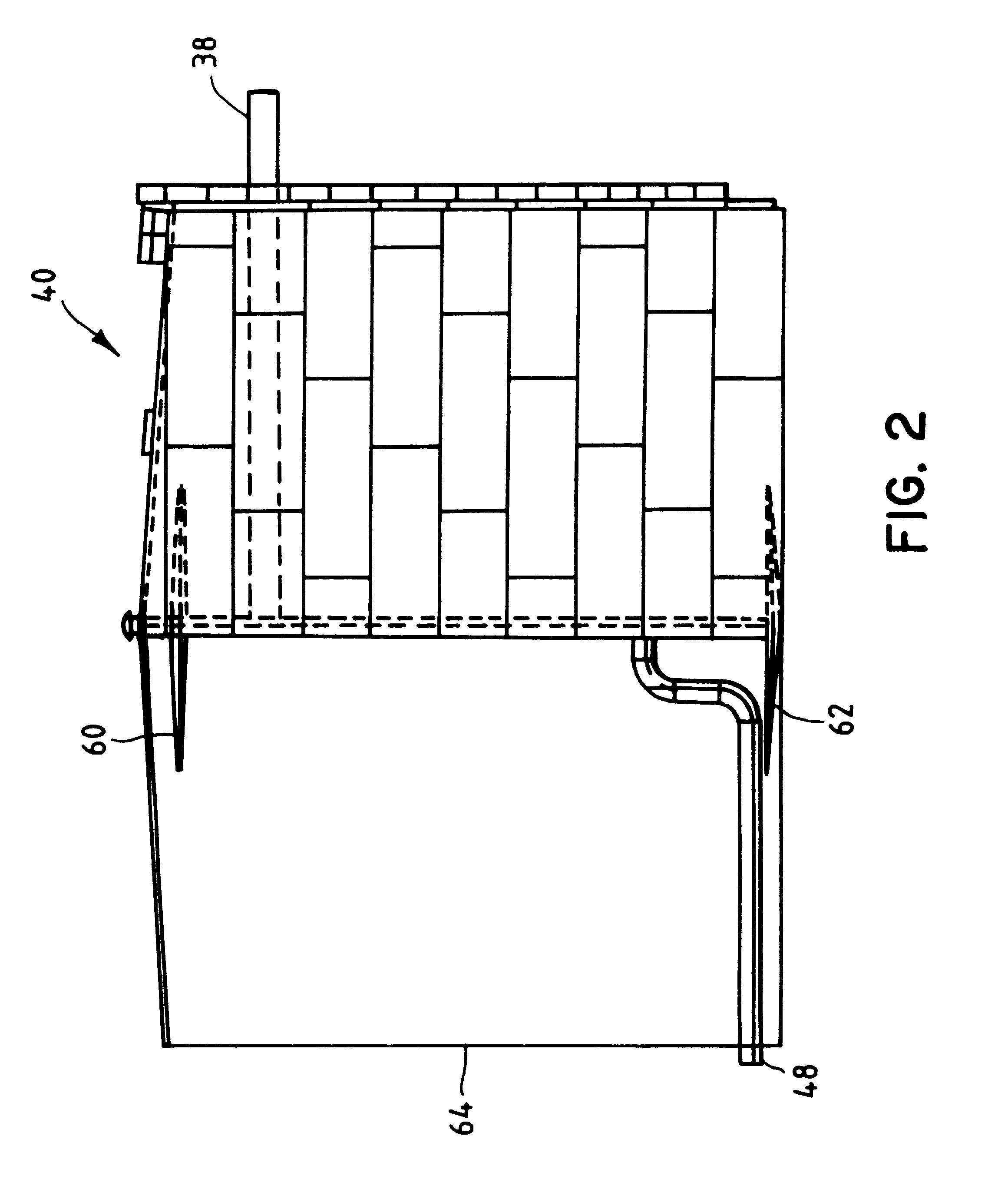Method and apparatus for enhancing power output and efficiency of combustion turbines
- Summary
- Abstract
- Description
- Claims
- Application Information
AI Technical Summary
Benefits of technology
Problems solved by technology
Method used
Image
Examples
Embodiment Construction
In the embodiment of the present invention shown in FIG. 1, two combustion turbine assemblies 10 and 12 are shown, each respectively including an inlet air cooler 14, 16, a fuel inlet 18, 20, an exhaust 22, 24, and each being mechanically connected to an electrical generator 26, 28. The turbines themselves are shown generally at 30, 32.
Each air cooler 14, 16, operates as a heat exchanger and employs a respective coil or the like 34, 36 that is connected to a source of cooled fluid. More specifically, the outlets of coils 34, 36 are connected through fluid line 38 to a stratified chilled fluid storage tank, shown generally at 40, and the fluid inlets to the coils 34, 36 are connected to the stratified chilled fluid storage tank 40 via fluid line 42. In the schematic diagram of FIG. 1, solid arrowheads represent a fluid flow direction during off-peak operation times and an open arrowhead represents the fluid flow direction during on-peak operation times. The cooling coil inlet line 42...
PUM
 Login to View More
Login to View More Abstract
Description
Claims
Application Information
 Login to View More
Login to View More - R&D
- Intellectual Property
- Life Sciences
- Materials
- Tech Scout
- Unparalleled Data Quality
- Higher Quality Content
- 60% Fewer Hallucinations
Browse by: Latest US Patents, China's latest patents, Technical Efficacy Thesaurus, Application Domain, Technology Topic, Popular Technical Reports.
© 2025 PatSnap. All rights reserved.Legal|Privacy policy|Modern Slavery Act Transparency Statement|Sitemap|About US| Contact US: help@patsnap.com



